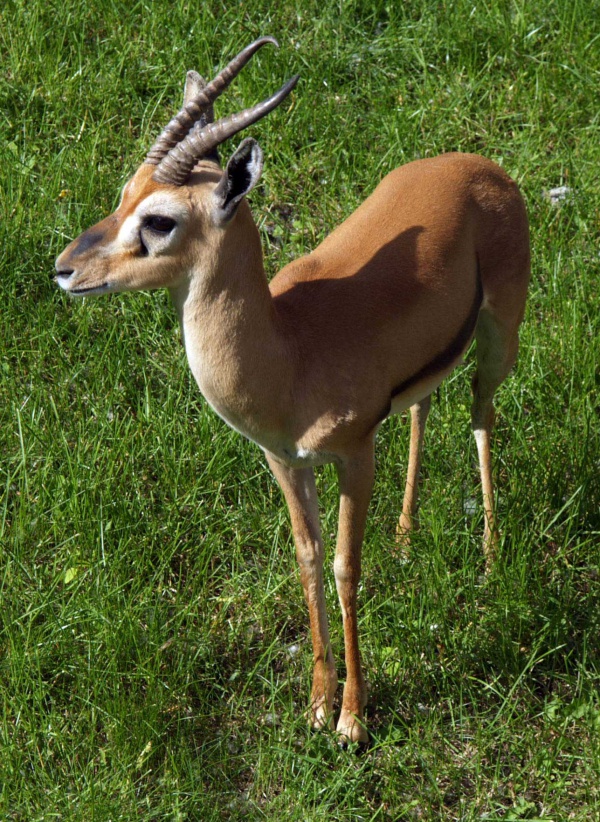Facts About Red-fronted gazelle
The red-fronted gazelle, scientifically named Eudorcas rufifrons, is a captivating species that roams widely across Africa, particularly within the Sahel zone. These elegant animals favor arid grasslands, wooded savannas, and shrubby steppes in the region. Notably, some experts even consider the Thomson's gazelle to be a subspecies of the red-fronted gazelle.
Sporting a light red-brown coat with striking markings, the red-fronted gazelle is truly a sight to behold. They possess distinctive s-curved horns and a black-tufted tail. In terms of size, young fawns weigh around 7.8 kg, while adults can reach up to 29.7 kg. These gazelles can be found in countries like Burkina Faso, Cameroon, Chad, Ethiopia, Nigeria, Senegal, and Sudan, where they inhabit semi-arid grasslands, savannas, and scrublands.
These gazelles are not well-suited for extremely arid conditions, prompting them to migrate southward during the dry season in search of water. While they primarily graze on grass, they also browse on leaves. Unfortunately, they face many natural predators, including lions, leopards, cheetahs, hyenas, and wild dogs. After a gestation period of 184–189 days, females give birth to a single fawn.
Currently, the red-fronted gazelle population is estimated to be around 25,000, but sadly, this number is decreasing. They face significant threats from illegal hunting, habitat degradation, and competition with domestic livestock. Consequently, they are classified as "vulnerable." Approximately 15% of their population resides in protected areas such as W National Park, Waza National Park, and Dinder National Park.

 Central African Republic
Central African Republic